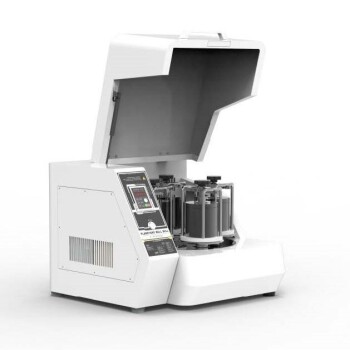Lamination machines are essential for protecting and enhancing printed materials by applying a plastic coating. The most common type is the heated roll laminator, which uses heated rollers to melt adhesive on lamination film, which is then pressed onto a substrate like paper or card. This process not only protects the document from wear and tear but also adds a professional finish. Understanding the different types of laminators and their specific uses can help in selecting the right machine for your needs.
Key Points Explained:

-
Types of Lamination Machines:
- Heated Roll Laminators: These are the most common type, using heated rollers to melt adhesive on lamination film, which is then applied to a substrate using pressure rollers. They are ideal for high-volume laminating tasks and provide a durable, professional finish.
- Cold Laminators: These machines use pressure-sensitive adhesives that do not require heat. They are suitable for heat-sensitive materials and are often used in environments where heat is not practical.
- Pouch Laminators: These are smaller, more portable machines that use pre-made laminating pouches. They are ideal for small-scale laminating tasks and are commonly used in offices and schools.
-
Components of a Lamination Machine:
- Heated Rollers: These are crucial in heated roll laminators, as they melt the adhesive on the lamination film.
- Pressure Rollers: These ensure that the lamination film adheres evenly to the substrate, providing a smooth finish.
- Feed Mechanism: This guides the substrate and lamination film through the machine, ensuring consistent application.
-
Applications of Lamination Machines:
- Document Protection: Lamination protects documents from moisture, dirt, and physical damage, making them more durable.
- Enhancing Appearance: Lamination can add a glossy or matte finish to documents, enhancing their visual appeal.
- Longevity: Laminated documents have a longer lifespan, making them ideal for items that need to be preserved over time, such as identification cards, menus, and instructional materials.
-
Considerations for Purchasing a Lamination Machine:
- Volume of Work: High-volume tasks may require a more robust machine like a heated roll laminator, while smaller tasks can be handled by pouch laminators.
- Material Sensitivity: If you are working with heat-sensitive materials, a cold laminator might be more appropriate.
- Ease of Use: Consider the complexity of the machine and whether it fits the skill level of the users.
- Maintenance and Durability: Look for machines that are easy to maintain and built to last, especially if they will be used frequently.
By understanding these key points, you can make an informed decision when selecting a lamination machine that best suits your needs. Whether you are looking to protect important documents or enhance the appearance of printed materials, the right lamination machine can make all the difference.
Summary Table:
| Aspect | Details |
|---|---|
| Types | Heated Roll, Cold, Pouch Laminators |
| Key Components | Heated Rollers, Pressure Rollers, Feed Mechanism |
| Applications | Document Protection, Enhanced Appearance, Longevity |
| Purchasing Factors | Volume of Work, Material Sensitivity, Ease of Use, Maintenance & Durability |
Ready to choose the perfect lamination machine for your needs? Contact us today for expert advice!








